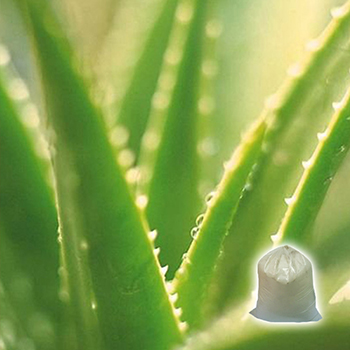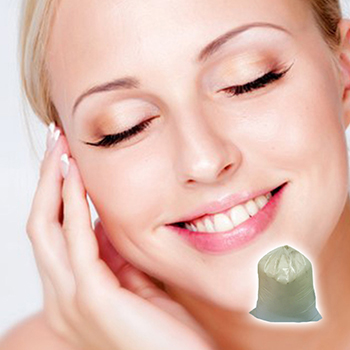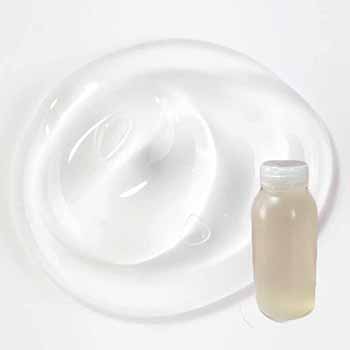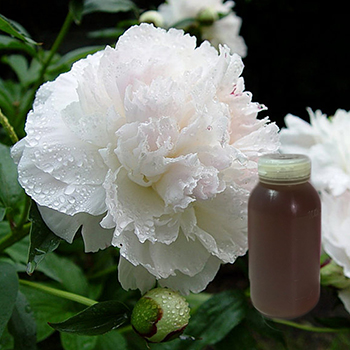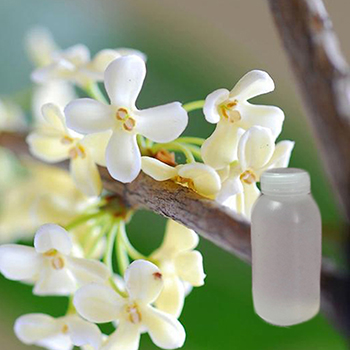目前購物車內沒有商品

一、Introduction:
English Lemon Balm
By hippocras keep Feng a person to think its special flavor can attract bee, and is planted as the Mi source plant the kind to it, so will be named as "the bee flower"
Scientific term Melissa officinalis
Belong to Melissa officinalis
The nickname lemon perfume mint, lemon mint, lemon fragrance of flower, bee spends
The subject lips form flower section get herbage for many years
At first south Europe, Mediterranean littoral in habitat
The type stub is high and can reach to 0.6-1 meters, the leaf is a bright light green color, the leaf vein is deep obvious, leaf's good luck presents the teeth of a saw form, wearing down of getting the softness on leaf's form and petiole, the caulis square, will open white, yellow or shallow blue of floret.
The assortment ivory brings shallow Huang
The flower expects six go to September
Characteristic
◎Is look alike with the mint shape, but in fact and not the close by species of the mint
The fragrant Feng grass isn't "the mint belong to"...And is "the western mountain mint belong to".....
◎The light petting can smell make free of mind and happy of heart lemon honey flavor of person
◎The fresh or dry leaf and delicate caulis applies every kind of cuisine, tea to drink, salad, dessert
◎Lie proper catchment of quality good, keep wetness, for need a bigger plant of amount of water
◎Keeping away the strong sun(at noon in front and back) of summer keeps shooting, managing easily more for the spice plant of a kind
The management
plants to grow after a period of time, if the plant beginning grows of the miscellaneous confusion will carry on cutting, just can let the plant grow so of more steady-going.Want to be advertent 1:00 of is the seed of the bee flower for the good light seed, reply soil and do not want while sowing seeds too thick, very thin one layer all right.
Breed to sow seeds a method, Qian to insert a method, or the offshoot method, the spring or autumns all can carry on
Effect
◎Refining the expensive lemon joss-stick spends ethereal oil(because of refining not easily), being used for the fragrant bathing and sweet smell therapy of hairdressing massage, Xun.
◎Be good for the stomach to help digest, the anti- melancholy, counteract poison a town to settle and smooth strain and help into the sleep
Other:
◎ Can attract the bee and other useful insects
◎ Leaf's slice can be used for the cooking or medical treatment, can adopt to accept ago in the efflorescence
◎ Bloom or cut before blooming, can stimulate a new leaf a growth
◎ The slice of the leaf can be used for the hybrid spice and fragrant medicine Zhen after being dry
◎ Adopt to accept leaf's slice spring that cans choose bloom in front and back, autumn two seasons, the flavor is more heavy, also dry behind take into again to make use of
◎ Fresh leaf's slice makes tea drier leaf's slice of eating good
◎ The near good luck species contain golden and fragrant Feng grass(Variegated), leaf's slice brings to have yellow striped pattern
◎ The fragrant Feng grass"gold leaf" Melissa officinalis'Aurea'
The oval leaf of the shallow green, have the golden color miscellaneous spot, there are the crease and the Chi Lie, have the lemon joss-stick, can refine the expensive lemon joss-stick flower oil
Related rumours:
◎Greece language of the Melissa is an apian meanings
◎British believes that drinking the fragrant Feng grass tea every day can with longevity again healthily, past your respectful name is"longevity grass"
◎The European's main sweet flavor anticipated in early days, now for adjust the wine saint article increment wine of sweet
◎Switzerland medicine cursive jots down:"The fragrant Feng grass can drive out the thoughts and feelings of the black."
二、lemon various application of the fragrant Feng grass:
The food and beverage
Lemon fragrant Feng grass for green plant, there is the smell of the lemon, there is the leaf of the sweet smell flavor, no matter is the half is fresh or dry, can be a kind of seasoning to pull condiment and season juice, soup, meat, vegetables,
dessert in the color.The dry leaf usually is used for in miscellaneously , is an agency of seasoning, the balsam is used for in some hard drinkses and the benefit wine and in the herbaceous tea.There are many specieses, , can be to decorate an usage.
Its being used for is a flavouring in the tisane and the ice-cream, but its most basic use be used as herbaceous tea, people give to give a special name ice of tea.
Especially be with other herbage mixture like mint.And, usually also is formed couples and the fruit dish or candy together edible.
The medicine uses
Lemon the fragrant Feng grass is a medicine to use a plant, and the tradition top lemon balsam be used for to is opposed to gluing film Yan, hot disease, flatulence, headache, flue, with toothaches.And, also was used for Be expel the stomach and intestines air, perspire, with tranquilizer.
Recently experiment research, the lemon balsam has quiet action in the once repressing of the central nervous system or town to the laboratory rat.
The oil of the balsam and is shown virussafe, anti-virus, with cure spasm of activity.
The lemon balsam is reported to is an insect to turn on water.
Medicine use
Shot ground leaf, be to rub in the skin, be used for is a repellant for the mosquito.
The lemon balsam the top of the medicine and be used for is a herbaceous tea, or with extract a thing form.It declares anti-virus, virussafe products, and it and be used for Be a tranquilizer of geniality or town settle of agency.At least a research finds it is valid being reducing accents, although the author of the research requests a further research[1].Its anti-virus thing obstetrics ground and is displayed, although they compare those obviously weaks from certainly other plants of the quantity be learned.
Lift to practice for the ethereal oil
The volatility oil is distiled by the steam of the equipment material to acquire after harvesting, be used for at the spice factory and only can copy the lemon balsam smell to extract a thing expensively by not so other sweet smell plants due to the perfume manufactory limitedly.The fresh leaf oil content equally is or less with a big scope at with of .Many harvest and the most proper horticulture practice is reported to increase commendable ethereal oil 100 divide into it.The highest level ethereal oil is withdrawn at the midsummer is the low department is from the plant.The ethereal oil includes two A Ji Hs two Xi Chuns, the fragrant Mao Chun, cintronellal, Fang Zhang Chun, the D son fragrant Fen acetate, spend Chun with orange.The ethereal oil is usually admixed fragrant Mao, fragrant Mao oil with the mixture lemon, or lemon oil.
The lemon balsam ethereal oil is very widespread in the aromatherapy.Oil.
Its flavor comes from the terpenes citronellal, fragrant Mao Chun, two A Hs are two Xi Quans, are hot two Xi Chunses with two A Jis.
Citronellol, or dihydrogeraniol, is a natural acyclic monoterpenoid. Both enantiomers occur in nature. (+)-Citronellol, which is found citronella oils, is the more common isomer. (−)-Citronellol is found in the oils of rose and geranium. Citronellol is used in perfumes.
|
Citronellol |
|
|
|
|
|
Chemical name |
3,7-dimethyloct-6-en-1-ol |
|
Chemical formula |
C10H20O |
|
Molecular mass |
156.27 g/mol |
|
CAS number |
[106-22-9] |
|
Density |
0.855 g/cm3 |
|
Melting point |
? °C |
|
Boiling point |
225 °C |
|
SMILES |
CC(CCC=C(C)C)CCO |
|
Disclaimer and references |
|
Terpenes are a large and varied class of hydrocarbons, produced primarily by a wide variety of plants, particularly conifers, though also by some insects such as swallowtail butterflies, which emit terpenes from their osmeterium. They are the major components of resin, and of turpentine produced from resin. The name "terpene" is derived from the word "turpentine".
When terpenes are modified chemically, such as by oxidation or rearrangement of the carbon skeleton, the resulting compounds are generally referred to as terpenoids. Some authors will use the term terpene to include all terpenoids.
Terpenes and terpenoids are the primary constituents of the essential oils of many types of plants and flowers. Essential oils are used widely as natural flavor additives for food, as fragrances in perfumery, in aromatherapy, and in traditional and alternative medicines. Synthetic variations and derivatives of natural terpenes and terpenoids also greatly expand the variety of aromas used in perfumery and flavors used in food additives.
Structure and biosynthesis
Terpenes are derived biosynthetically from units of isoprene, which has the molecular formula C5H8. The basic molecular formulas of terpenes are multiples of that, (C5H8)n where n is the number of linked isoprene units. This is called the isoprene rule or the C5 rule. The isoprene units may be linked together "head to tail" to form linear chains or they may be arranged to form rings. One can consider the isoprene unit as one of nature's preferred building blocks.
Isoprene itself does not undergo the building process, but rather activated forms, isopentenyl pyrophosphate (IPP or also isopentenyl diphosphate) and dimethylallyl pyrophosphate (DMAPP or also dimethylallyl diphosphate), are the components in the biosynthetic pathway. IPP is formed from acetyl-CoA via the intermediacy of mevalonic acid in the HMG-CoA reductase pathway. An alternative, totally unrelated biosynthesis pathway of IPP is known in some bacterial groups and the plastids of plants, the so-called MEP(2-Methyl-D-erythritol-4-phosphate)-pathway, which is initiated from C5-sugars. In both pathways, IPP is isomerized to DMAPP by the enzyme isopentenyl pyrophosphate isomerase.
Isoprene

As chains of isoprene units are built up, the resulting terpenes are classified sequentially by size as hemiterpenes, monoterpenes, sesquiterpenes, diterpenes, sesterterpenes, triterpenes, and tetraterpenes.
[edit] Types
Second or third instar caterpillar of Papilio glaucus emit terpenes from their osmeteriumHemiterpenes consist of a single isoprene unit. Isoprene itself is considered the only hemiterpene, but oxygen-containing derivatives such as prenol and isovaleric acid are hemiterpenoids.
Monoterpenes consist of two isoprene units and have the molecular formula C10H16. Examples of monoterpenes are: geraniol and limonene.
Sesquiterpenes consist of three isoprene units and have the molecular formula C15H24. Examples of sesquiterpenes are: farnesol. The sesqui- prefix means one and a half.
Diterpenes are composed for four isoprene units and have the molecular formula C20H32. They derive from geranylgeranyl pyrophosphate. Examples of diterpenes are cembrene and taxadiene (precursor of taxol). Diterpenes also form the basis for biologically important compounds such as retinol, retinal, and phytol.
Sesterterpenes, terpenes having 25 carbons and five isoprene units, are rare relative to the other sizes. The sester- prefix means half to three, i.e. two and a half.
Triterpenes consist of six isoprene units and have the molecular formula C30H48. The linear triterpene squalene, the major constituent of shark liver oil, is derived from the reductive coupling of two molecules of farnesyl pyrophosphate. Squalene is then processed biosynthetically to generate either lanosterol or cycloartenol, the structural precursors to all the steroids.
Tetraterpenes contain eight isoprene units and have the molecular formula C40H56. Biologically important tetraterpenes include the acyclic lycopene, the monocyclic gamma-carotene, and the bicyclic alpha- and beta-carotenes.
Polyterpenes consist of long chains of many isoprene units. Natural rubber consists of polyisoprene in which the double bonds are cis. Some plants produce a polyisoprene with trans double bonds, known as gutta-percha.
Citronellal or rhodinal or 3,7-dimethyloct-6-en-1-al (C10H18O) is a monoterpenoid, the main component in the mixture of terpenoid chemical compounds that give citronella oil its distinctive lemon scent.

citronellal
Citral, or 3,7-dimethyl-2,6-octadienal or lemonal, is either of a pair of terpenoids with the molecular formula C10H16O. The two compounds are double bond isomers. The transisomer is known as geranial or citral A. The cis isomer is known as neral or citral B.
Citral is the major constituent of the oil of lemongrass and the oils of other plants in the genus Cymbopogon. It is also present in the oils of verbena, lemon and orange.
Geranial has a strong lemon odor. Neral has a lemon odor that is less intense, but sweeter. Citral is therefore an aroma compound used in perfumery for its citrus effect. Citral is also used as a flavor and for fortifying lemon oil.
Citral is used in the synthesis of vitamin A, ionone, and methylionone.

Geranial

Neral
Geraniol, also called rhodinol, is a monoterpenoid and an alcohol. It is the primary part of oil-of-rose and palmarosa oil. It also occurs in small quantities in geranium, lemon, citronella, and many other essential oils. It appears as a clear to pale-yellow oil which is insoluble in water, but soluble in most common organic solvents. It has a rose-like odor, for which it is commonly used in perfumes. It is used in flavors such as peach, raspberry, grapefruit, red apple, plum, lime, orange, lemon, watermelon, pineapple and blueberry.
An alternate application has been found in the use of insect repellents or deterrants. Though it may repel mosquitoes, flies, lice, cockroaches, ants, and ticks, it is also produced by the scent glands of honey bees to help them mark nectar-bearing flowers and locate the entrances to their hives. Extensive testing by Dr. Jerry Butler at the University of Florida has shown geraniol to be one of nature's most effective insect repellents.[citation needed]
In a 1994 report released by five top cigarette companies, geraniol is listed as one of the 599 additives to cigarettes, to improve their flavor. Geraniol and other flavour compounds are found naturally in well aged tobacco.
In acidic solutions, geraniol is converted to the cyclic terpene alpha-terpineol.
|
Geraniol |
|
|
|
|
|
Chemical name |
3,7-dimethyl-2,6-octadien-l-ol |
|
Chemical formula |
C10H18O |
|
Molecular mass |
154.25 g/mol |
|
CAS number |
[106-24-1] |
|
Density |
0.889 g/cm3 |
|
Melting point |
15 °C |
|
Boiling point |
229 °C |
|
SMILES |
C(C)(C)=CCCC(C)=CCO |
